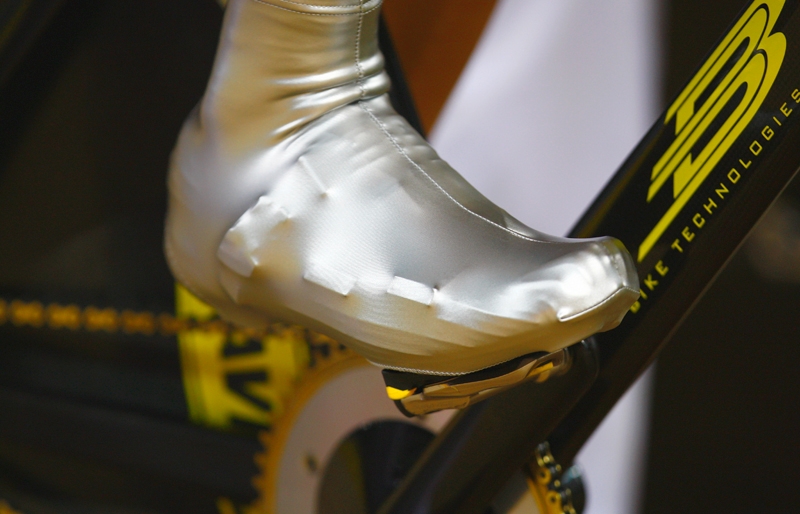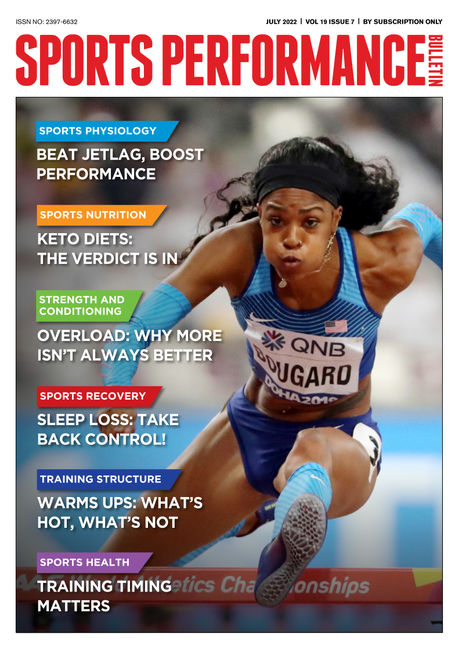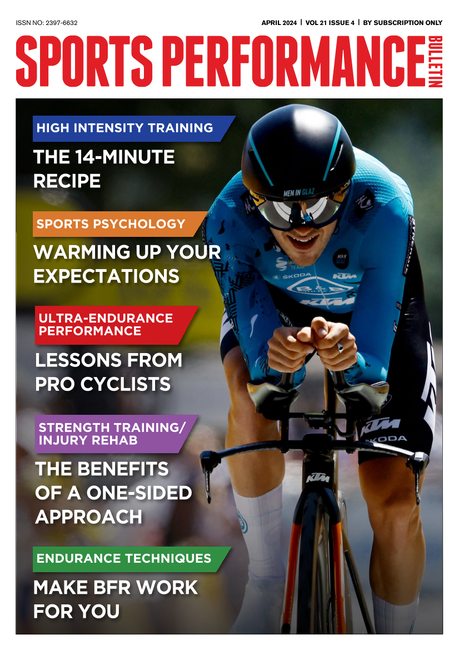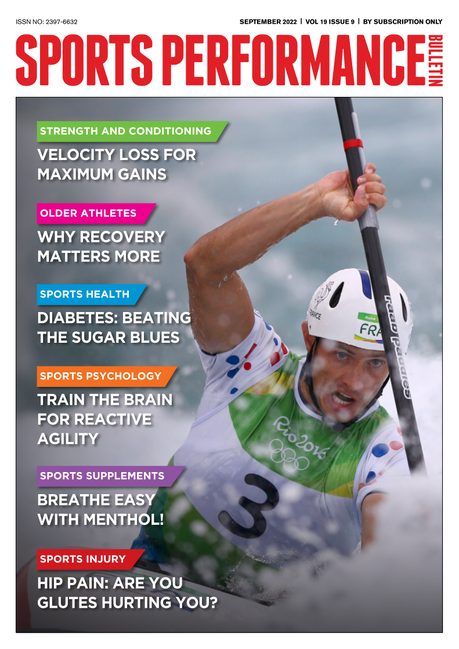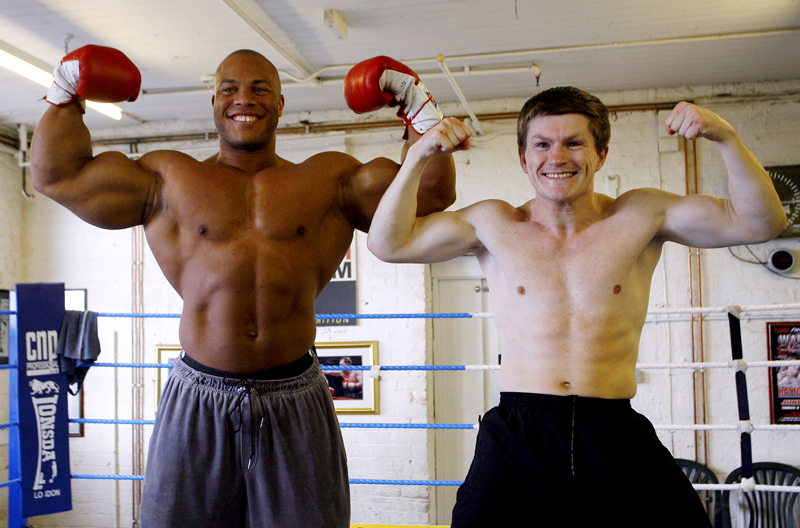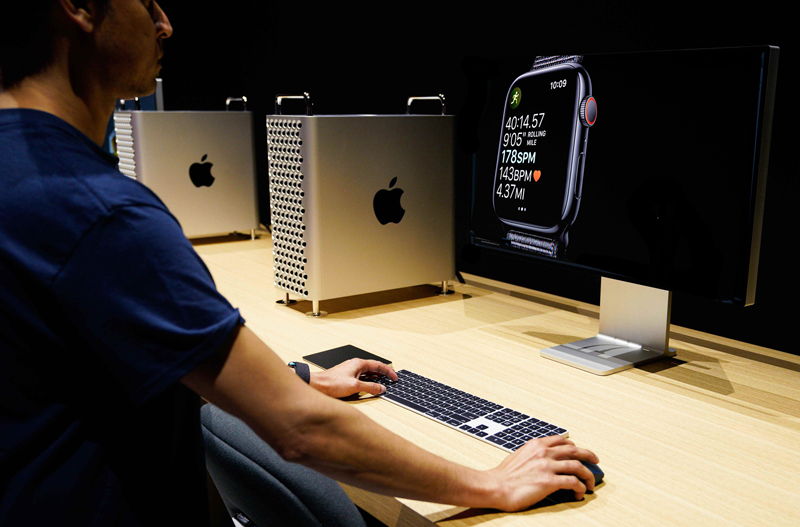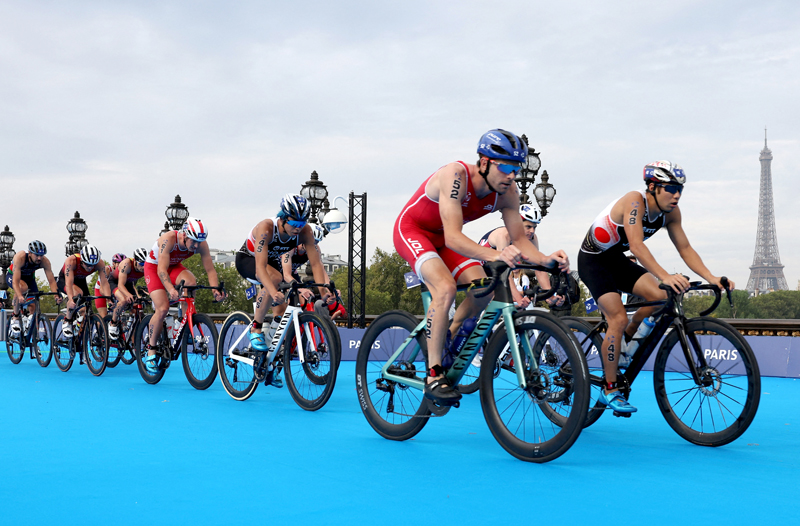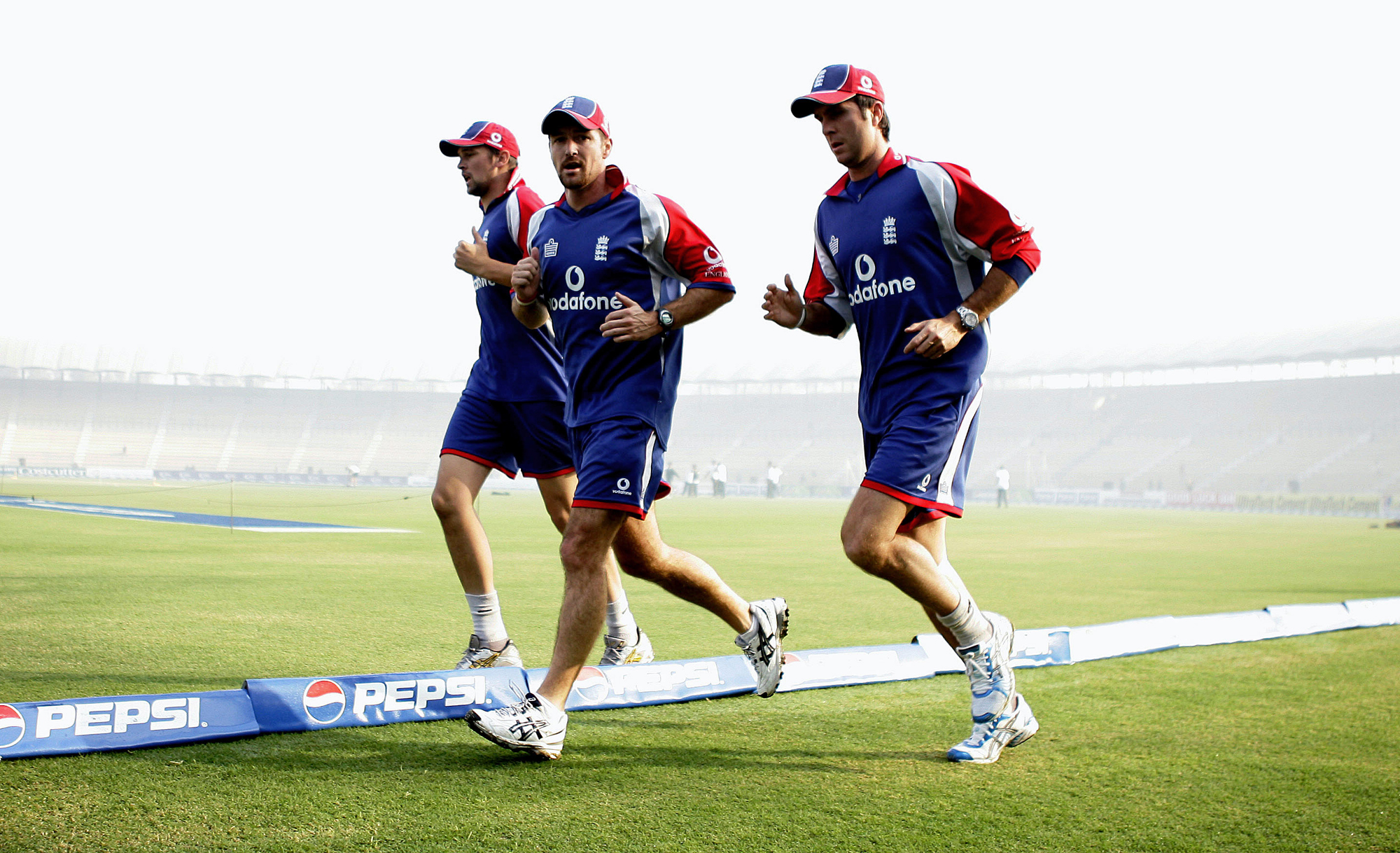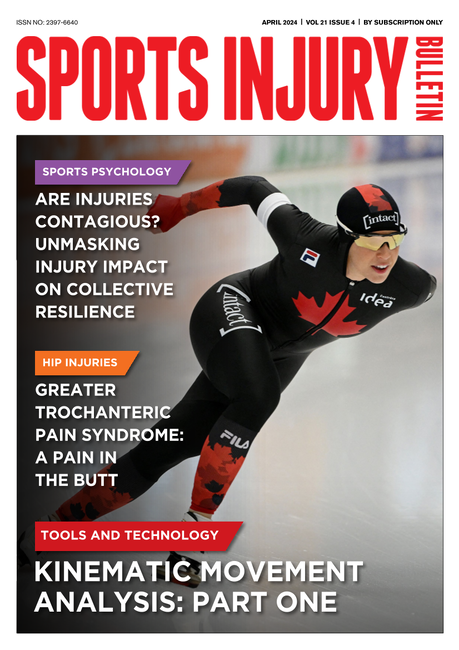From a clinical perspective, the bicycle holds the moving limbs of the lower body in a fixed arc; you have your foot in a rigid shoe, fixed to the pedal with a shoe cleat, which essentially attaches your foot to the end of a crank arm. When spinning the cranks (pedalling), this ‘closed circuit’ provides a fairly predetermined movement pattern, which allows for very little personal flair or style.
In effect, when studying the movement patterns during pedalling, all cyclists’ legs look fairly similar to one another, regardless of the level of exertion, the terrain, or whether the rider is in or out of the saddle. This is in marked contrast to the huge variations that can be seen in runners’ leg gait or freestyle swimmers’ arm movement patterns. The key question, therefore, is whether and how can you become better at pedalling?
Foot action
There are many ways that riders have attempted to improve cycling efficiency (the amount of power produced for a given level of oxygen consumption), most notably trying to pedal in a way that accentuates the upward lift of the foot, and varying the pitch of the ankle in various ways. The exact method, terminology and descriptions of this technique depend on whose interpretation you read. Suffice to say there is no evidence that these methods produce any significant improvements in efficiency over the normal, simple method of simply concentrating on the ‘press-down’ phase of each pedal revolution(1). The best riders push down harder than the slower riders and therefore go faster – it’s as simple as that!Rule #1: push the pedals and don’t over-analyse any special foot action
Copying the pros
It’s hard to know whether pro riders are fit, good at pedalling efficiently or fit and good at pedalling efficiently! Few studies have properly tracked the career of elite cyclists so if there are any changes in economy over time, the data to support this notion are virtually non-existent.However, there is a famous paper, on a certain Lance Armstrong, which suggests the measured gains in efficiency in his early years (see box 1) were due to changes to the muscle structure as a result of training and maturity(2). However, this data has been challenged by some researchers(3,4). They have suggested that the time periods examined don’t show year-on-year comparisons, that VO2max and body mass changes were more significant than riding economy and, most importantly, that fundamental problems in data collection make the data impossible to compare over a seven-year period. Granted, the data presented by Coyle(2) show improvements in Armstrong’s fitness; however, this improved efficiency may have been an indirect observation rather than the actual cause of his subsequent success.
Likewise, a study using 69 cyclists from recreational to world-class level suggests that there are not significant differences in cycling economy between such widely varying subjects(5). So rather than their superb pedalling efficiency, the key to being a top dog cycling pro may instead be the maximum power, aerobic fuel efficiency, tactical awareness and fatigue resistance.
Rule #2: your potential maximum riding economy is likely already innately fixed. However, lower body fat levels and bike weight, increased strength and power, better tactics and correct sports nutrition can all make you a much better rider
Fitness first
A common assumption is that elite riders must share similar traits in order to get to the top. One of these assumptions is that elite riders must be efficient because they ride huge distances every year (circa 25,000-45,000km). However, this is debatable. Data from professional teams has shown that across a batch of 12 world class riders cycling at around 400 watts (around 5 watts per kilo of body weight) gross efficiency can vary from 20.9 to 28% – in other words average to super-human efficiency(7). This is a huge variation considering these riders had all shone at elite level and all ridden massive distances.
Interestingly, data presented by the Spanish team that did the research actually suggests that those with a lower maximum aerobic capacity (VO2max) can adapt and make up for such shortcomings with increased riding efficiency(7). Interestingly, this phenomenon (of modest VO2max but superior efficiency) has also been hinted at by some researchers from the field of running biomechanics.
Higher cadence?
Many people have examined Lance Armstrong’s riding ability and (mistakenly) deduced that for all riders, the best way to pedal well is to spin the cranks at 95-100rpm. However, lets make a couple of things crystal clear:1. The higher cadences used by professional riders is because they are producing as much as 400-500 watts in time-trial efforts or climbs of 20 to 60 minutes;
2. Recovery from day-to-day ‘tour’ riding is easier with higher cadence riding, so riders chose this as a matter of energy conservation(8). So while Lance may ride a time trial at close on 100rpm, he is sustaining over 450 watts. Lesser mortals can probably only sustain around 250-350 watts, so cadence can be significantly lower – say around 75-85rpm. This is especially so when climbing where many cyclists can find improved efficiency (and ability to climb) at around 70rpm.
Macintosh and his co-workers have shown that optimal cadence for 100, 200, 300 and 400w cycling occurs at 57, 70, 86 and 99rpm respectively(9). This casts some doubt on the age-old advice that cyclists should aim for 95rpm because ‘that’s what the pros do’. Sadly though, we don’t all generate 400 watts in time trial and fast climb efforts! In fact, in a review of studies in this area, scientists concluded that ‘the choice of a relatively high cadence during cycling at low to moderate intensity is uneconomical and could compromise performance during prolonged cycling’(10).
Rule #3: choose a cadence that mirrors your power output; slower riding and warm ups should use a lower cadence while high-effort time trials should use a higher cadence. Unless you’re an elite rider, it’s unlikely you’ll benefit from using cadences exceeding around 85rpm
Five things NOT to do to increase efficiency!
- Focus on lots of turbo trainer drills – it’s unlikely to help efficiency. Instead use rollers for balance, coordination and a smoother pedal action;
- Place a lot of emphasis on high intensity intervals in spin classes – there’s no proof this helps. A fixed wheel bike on the road or lower intensity coordination spin-bike riding will likely be more productive;
- Buy independent ‘Powercranks’ (where left and right cranks can spin independently of each other) These have been tested and have shown no benefits(6);
- Significantly cut down on carbohydrates or restrict feeding on longer rides to force your body to adapt and become more efficient. This is just likely to cause illness and burnout;
- Do excessive high cadence (speed of pedal rotation) riding in an attempt to be able to spin at 110 or even 120rpm. Unless you can match this up to a 400-450 watt sustained efforts or greater you are just making yourself great at pressing down on air, not forcing the pedals downwards!
Four ways to get more efficient
- Ride rollers: these consist of a simple three-barrel device, which is becoming increasingly overlooked now widescreen training systems can be connected to an indoor trainer. However, efficient track cyclists, time trialists and cyclo-cross riders use rollers as part of their efficient riding programme. Short-term observations suggest the smooth pedal style that balancing on such an unforgiving surface gives can equate to 1-2% improvement in efficiency measures.
- Ride more: though we don’t have a direct mileage verses efficiency table to prove more miles means better efficiency, good riders do ride their bike several times per week. A minimum level of riding must be adhered to (like any skill). Varying the cadences used, the type of bike (fixed wheel, night riding, off-road mountain bike, etc) and developing handling all helps to eke out a more efficient rider/bike partnership.
- Use non-circular chain rings (like the Cervelo test team!). The variable circumference Q-Ring front chain rings can give improved pedal efficiency(11). By increasing the resistance on the down-stroke and easing up across the bottom and top of the pedal stroke, non-circular rings can make pedalling easier without having to think about a new pedalling style, especially when climbing.
- Vary cadence deliberately, from very low cadence hills (eg 50rpm in a big gear with smooth, controlled pressure) up to fast spinning brief eight-second sprints to ignite lots of muscle fibres. There’s more than one cadence sweet spot or one speed of riding. By keeping it varied, the nervous system, muscles and energy systems have to adapt.
References
1 Med Sci Sports Exerc 2007; 39(6):991-995.
2. J. Appl. Physiol 2005; 98:2191-2196
3. J. Appl. Physiol 2005; 99: 1630-1631
4. J Appl Physiol 2005; 99: 1628-1629
5. Int J Sports Med 2004; 25(5): 374-379
6. Int J Sports Physiol Perform. 2009; 4: 18-28
7. Med Sci Sports Exerc 2002; 34(12):2079-2084
8. Med Sci Sports Exerc 2001; 33(8): 1361-1366
9. Med Sci Sports Exerc 2000; 32(7): 1281-1287
10. Int J. Sp. Phys Perf 2009; 4: 3-17
11. J Physiol Anthropol. 2009; 28(6):261-7
